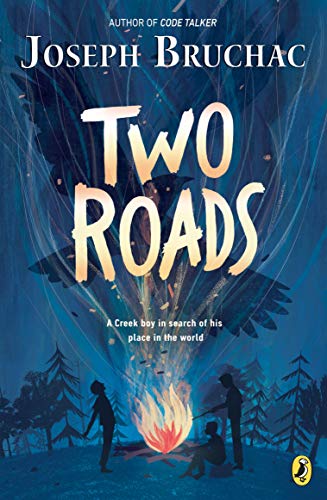On this page: General Resources | Trail of Tears | Native American Wars | Historical Fiction
general resources
📖 An Indigenous Peoples' History of the United States for Young People by Roxanne Dunbar-Ortiz. This entry in the ReVisioning American History for Young People series provides an important perspective on Native American history: “Going beyond the story of America as a country ‘discovered’ by a few brave men in the ‘New World,’ Indigenous human rights advocate Roxanne Dunbar-Ortiz reveals the roles that settler colonialism and policies of American Indian genocide played in forming our national identity.” – Middle • High
📖 Fry Bread: A Native American Family Story by Kevin Noble Maillard. This gentle, poetic homage to fry bread and contemporary Native American family traditions has landed on a slew of 2019 Best Picture Book lists. The end material contains a recipe for “Kevin’s Fry Bread” along with detailed notes that lend historical and cultural context to each two-page spread. – Preschool • Elementary
📺 We Shall Remain from PBS. This five-part series shows "how Native peoples valiantly resisted expulsion from their lands and fought the extinction of their culture -- from the Wampanoags of New England in the 1600s who used their alliance with the English to weaken rival tribes, to the bold new leaders of the 1970s who harnessed the momentum of the civil rights movement to forge a pan-Indian identity." – Middle • High
🔗 Content Connections: First Americans. Learn about the Pre-Columbian Americas and read Native American myths & legends.
🔗 Content Connection: Westward. Learn about European westward movement during the 19th century.
cherokee & trail of tears
📖 Sequoyah: The Cherokee Man Who Gave His People Writing by James Rumford. Rumford's story-within-a-story tells of Sequoyah, the 19th century Cherokee man who invented a writing system for his people. It is said that California's giant sequoia trees were named in honor of the great Sequoyah. An older student interested in learning more about Sequoyah might enjoy Joseph Bruchac’s recent novel, Talking Leaves. – Elementary
📖 Only the Names Remain: The Cherokees and the Trail of Tears by Alex Bealer. This brief chapter book offers a succinct history of the Cherokee Nation from the time before Columbus to their forced exile from their homeland in the 1830s. –Elementary • Middle
📖 If You Lived With the Cherokees by Peter and Connie Roop. Following a Q&A format, this book shows what it was like to grow up in a Cherokee family of the past, through full-color illustrations by a Cherokee artist. – Preschool • Elementary
native american wars
📖 Crazy Horse's Vision and A Boy Called Slow by Joseph Bruchac. These fictionalized accounts depict the childhoods of the two Lakota Sioux boys who will one day grow up to become the great warriors Crazy Horse and Sitting Bull. – Preschool • Elementary
📖 Black Elk's Vision: A Lakota Story by S. D. Nelson. "Told from a Native American point of view, Black Elk’s Vision provides a unique perspective on American history. From recounting the visions Black Elk had as a young boy, to his involvement in the battles of Little Big Horn and Wounded Knee, as well as his journeys to New York City and Europe with Buffalo Bill’s Wild West Show, this biographical account of Black Elk—an Oglala Lakota medicine man who lived from 1863 to 1950—follows him from childhood through adulthood." All students of US history should know the tragic story of the Lakota Indians.
– Middle
📖 Saga of the Sioux by Dwight Jon Zimmerman. Learn about Red Cloud, Sitting Bull, Crazy Horse, and the Sioux nation in this young reader's adaptation of Dee Brown's classic, Bury My Heart at Wounded Knee. "Zimmerman's selections and stories...combined with new text, maps, and stunning photographs, create a dramatic edition...that reveals the other side of the frontier saga – how the West was lost." – Middle • High
▶️ The last chief of the Comanches and the fall of an empire from TED-Ed. “Late one night in 1871, a group of riders descended on a sleeping army camp, stole about 70 horses, and disappeared. Led by a young chief named Quanah Parker, the raid was the latest in a long series of altercations along the Texas frontier between indigenous people and United States forces. Who was this brave warrior?” – All
historical fiction
📖 The Birchbark House trilogy by Louise Erdrich. "Omakayas and her family live on the land her people call the Island of the Golden-Breasted Woodpecker. Although the white people encroach more and more on their land, life continues much as it always has." This award-winning trilogy centers around an Ojibwa family in the mid-19th century. After completing the trilogy, Erdrich continued the series with Chickadee and Makoons. This new story arc takes an Ojibwe family to the Great Plains of the Dakota Territory. – Elementary • Middle
📖 Om-kas-toe by Kenneth Thomasma. In Blackfoot culture in the early 1700s, twins are believed to bring bad luck. This is the story of Om-kas-toe, a twin who instead makes a significant and lifechanging contribution to his tribe—in an era where hunting buffalo is still done primarily on foot, he brings the Blackfeet a horse. A fascinating window into the challenges and perils of Native American life at that time. Highly recommended. – Elementary • Middle
📖 Sing Down the Moon by Scott O’Dell. “The Navajo tribe's forced march from their homeland to Fort Sumner by white soldiers and settlers is dramatically and courageously told by young Bright Morning. Beautifully written story of a teen aged girl who is confronted by the challenges of life as a female member of the Navaho nation in the mid-1860s. Poignant and thought-provoking.” A Newbery Honor Book. Highly recommended. – Elementary • Middle
📖 Two Roads by Joseph Bruchac. This novel, set in the Depression Era, tells the story of Cal Black, a half-Creek 12-year-old boy who is sent to a government boarding school for Native Americans and learns about the history of his people. – Middle
















